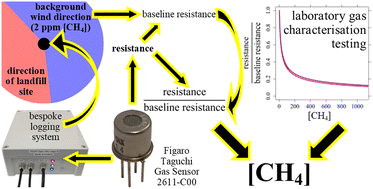Environ. Sci.: Atmos., 2024, 4,362-386
DOI: 10.1039/D3EA00138E, Paper
DOI: 10.1039/D3EA00138E, Paper
 Open Access
Open Access This article is licensed under a Creative Commons Attribution 3.0 Unported Licence.
This article is licensed under a Creative Commons Attribution 3.0 Unported Licence.Adil Shah, Olivier Laurent, Grégoire Broquet, Carole Philippon, Pramod Kumar, Elisa Allegrini, Philippe Ciais
The Figaro Taguchi gas sensor 2611-C00 was used to derive methane mole fraction at a landfill site from the ratio between measured resistance and a modelled reference resistance corresponding to background sampling, identified from wind direction.
The content of this RSS Feed (c) The Royal Society of Chemistry
The Figaro Taguchi gas sensor 2611-C00 was used to derive methane mole fraction at a landfill site from the ratio between measured resistance and a modelled reference resistance corresponding to background sampling, identified from wind direction.
The content of this RSS Feed (c) The Royal Society of Chemistry










